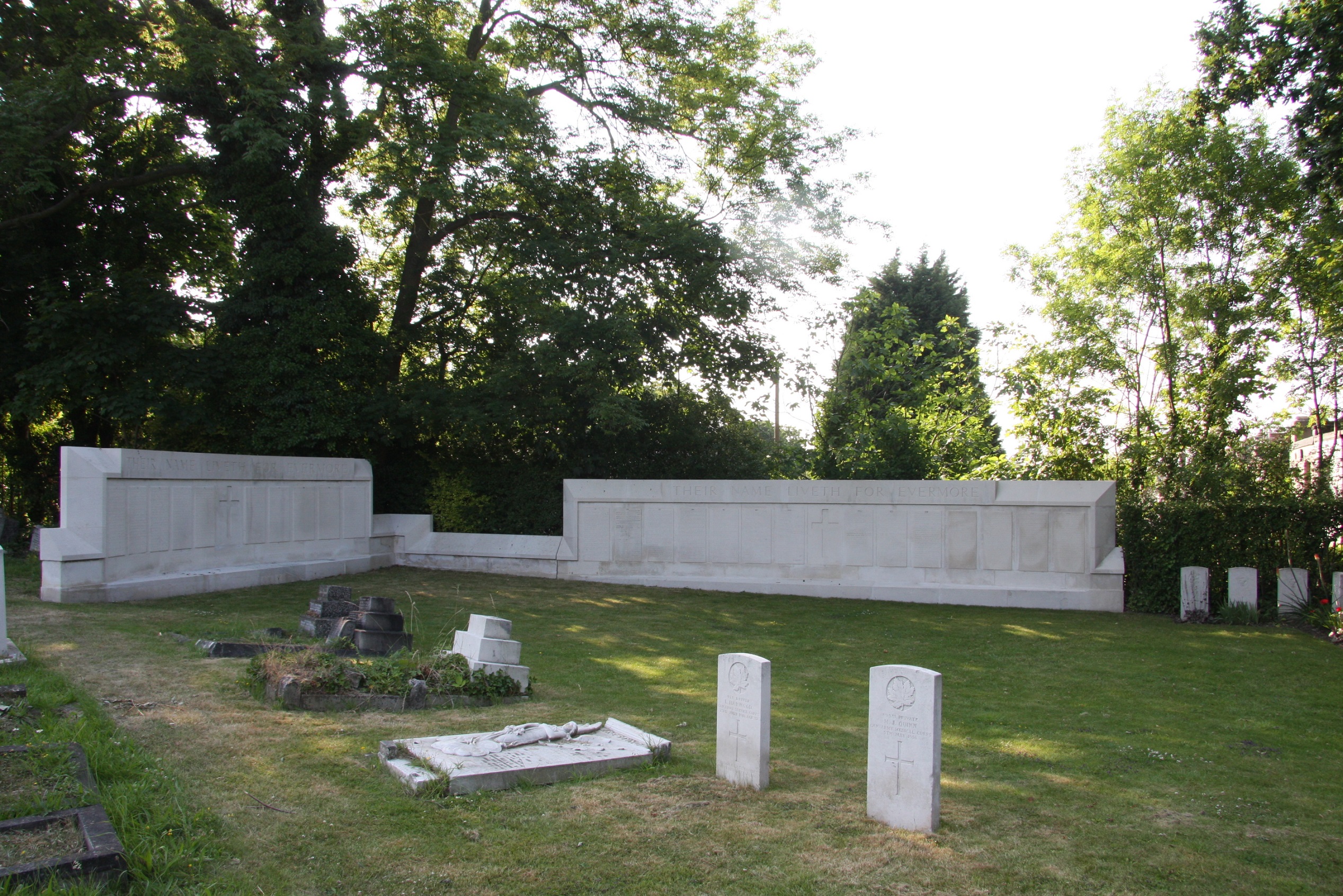Able Seaman Albert Edward McKenzie V.C., the Royal Navy, died while recuperating from wounds received in action seven months earlier.
His father died shortly after he was born, leaving his mother to raise six children. He was educated in council schools in Bermondsey and Southwark, and went to St. Mark’s Sunday school in Camberwell. During the Great War, 4,286 men from that parish enlisted, the largest number of any of the London parishes - they became known as “St. Mark’s Little Army”. More than five hundred would not return.
Able Seaman McKenzie was a fine athlete, having won an array of medals and trophies for both football and boxing. He joined the Royal Navy training ship H.M.S. Arethusa in 1913 - by 1916 he had served on various patrols boats, minesweepers and convoy escorts before transferring to the battleship H.M.S. Neptune, based at Scapa Flow as part of the Grand Fleet.
In April, 1918, Able Seaman McKenzie volunteered for a special mission - eight “Arethusa Lads” would be sent to Zeebrugge in Belgium aboard H.M.S. Vindictive, as part of a storming party. They were to sink three warships, block the canal entrance, and detonate two old submarines to damage the port, thereby creating a diversion, enabling three British warships to get into position. But the Germans inflicted heavy casualties before she even could engage the enemy gunners.
Able Seaman McKenzie wrote to his brother: “We got within 15 minutes’ run of the Mole when some marines got excited and fired their rifles. Up went four big star shells and they spotted us…They hit us with the first two shells and killed seven marines…I tucked the old Lewis gun under my arm and nipped over the gangway…Commander Brock threw a Mills bomb. You ought to have seen them nip out and try to get across to the destroyer, but this little chicken met them half way with the box of tricks, and I ticked about a dozen off..Then I found a rifle and bayonet…All I remember was pushing kicking and kneeing every German who got in the way”.
Severely wounded, he crawled on his hands and knees to safety. After spending time in the Royal Naval Hospital at Chatham he went to Buckingham Palace, on crutches, to receive his Victoria Cross. Still recuperating, he succumbed to influenza five months later. Able Seaman McKenzie lies buried in Camberwell Old Cemetery, with the words “For their tomorrow we gave our today” on his headstone. At his funeral the politician T.J. McNamara said: “Mrs. McKenzie has lost a son, but the nation has found a hero.”
Albert, from Bermondsey, had just turned 20 years old ten days earlier.
~
He was awarded the VC on 31 July 1918, and died just over three months later.
Able Seaman Albert Edward McKenzie V.C., the Royal Navy, died while recuperating from wounds received in action seven months earlier.
His father died shortly after he was born, leaving his mother to raise six children. He was educated in council schools in Bermondsey and Southwark, and went to St. Mark’s Sunday school in Camberwell. During the Great War, 4,286 men from that parish enlisted, the largest number of any of the London parishes - they became known as “St. Mark’s Little Army”. More than five hundred would not return.
Able Seaman McKenzie was a fine athlete, having won an array of medals and trophies for both football and boxing. He joined the Royal Navy training ship H.M.S. Arethusa in 1913 - by 1916 he had served on various patrols boats, minesweepers and convoy escorts before transferring to the battleship H.M.S. Neptune, based at Scapa Flow as part of the Grand Fleet.
In April, 1918, Able Seaman McKenzie volunteered for a special mission - eight “Arethusa Lads” would be sent to Zeebrugge in Belgium aboard H.M.S. Vindictive, as part of a storming party. They were to sink three warships, block the canal entrance, and detonate two old submarines to damage the port, thereby creating a diversion, enabling three British warships to get into position. But the Germans inflicted heavy casualties before she even could engage the enemy gunners.
Able Seaman McKenzie wrote to his brother: “We got within 15 minutes’ run of the Mole when some marines got excited and fired their rifles. Up went four big star shells and they spotted us…They hit us with the first two shells and killed seven marines…I tucked the old Lewis gun under my arm and nipped over the gangway…Commander Brock threw a Mills bomb. You ought to have seen them nip out and try to get across to the destroyer, but this little chicken met them half way with the box of tricks, and I ticked about a dozen off..Then I found a rifle and bayonet…All I remember was pushing kicking and kneeing every German who got in the way”.
Severely wounded, he crawled on his hands and knees to safety. After spending time in the Royal Naval Hospital at Chatham he went to Buckingham Palace, on crutches, to receive his Victoria Cross. Still recuperating, he succumbed to influenza five months later. Able Seaman McKenzie lies buried in Camberwell Old Cemetery, with the words “For their tomorrow we gave our today” on his headstone. At his funeral the politician T.J. McNamara said: “Mrs. McKenzie has lost a son, but the nation has found a hero.”
Albert, from Bermondsey, had just turned 20 years old ten days earlier.
~
He was awarded the VC on 31 July 1918, and died just over three months later.
Inscription
Royal Navy
Gravesite Details
J/31736
Family Members
Other Records
Sponsored by Ancestry
Advertisement
Advertisement










